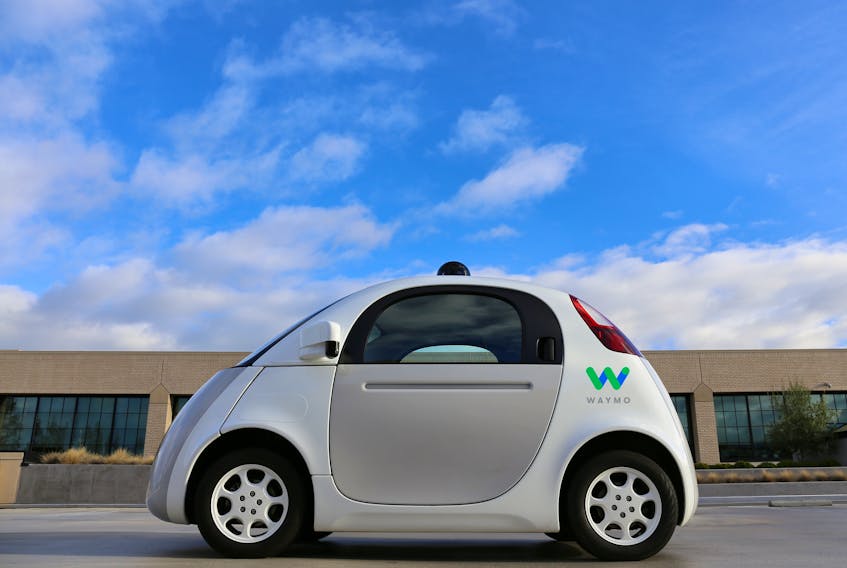TORONTO, Ont. — Hold the hype. Fully-autonomous cars, the sort that can whisk you to work through a snowstorm while you sleep, are still probably decades away according to experts.
“In our lifetime,” is as firm a prediction on when fully autonomous cars will be ready as Zaki Fasihuddin, CEO of the Volvo Cars Tech Fund, was willing to make. “Hopefully in the coming decades,” he said, speaking at the Collision technology conference in Toronto earlier this year.
Level 5, the highest level of autonomous vehicles — meaning vehicles that can drive themselves anywhere, anytime, in any weather — still face massive technological, regulatory and social hurdles before they show up at your door.
“It has really been viewed as a technology problem to solve,” said Fasihuddin. “As people dug into it, they realized it was perhaps a lot more complex than they thought.”
The problem has many dimensions.
“It’s societal, in terms of how it impacts public policy; it’s behavioral, in terms of consumer trust and consumer adoption,” he explained.
That’s the bad news about self-driving cars. The good news is that we might not need to wait for fully autonomous vehicles before we reap significant benefits.

“Ubiquitous level 5, no steering wheel, drive anywhere? Yes, that’s decades away. I don’t think that matters though,” said Sterling Anderson, co-founder of Aurora, a leading autonomous vehicle startup. “The difference we can make [to people’s lives] as we introduce level 4 systems – which is to say, bounded systems — is pronounced,” he said at Collision.
Level 4 conditionally-autonomous vehicles won’t take decades to arrive; they’ll be here sooner. These cars will be able to drive themselves but only under certain circumstances: on big highways, in good weather, for example. They’ll be bounded by geofences that restrict where they operate.
“In the early days, it’s unlikely that you’ll own it,” Anderson said of such highly-autonomous cars. The technology will be prohibitively expensive.
“You, as a consumer, will experience your first self-driving car in ride sharing…. From time to time, when you request a ride, one without a driver would happen to show up,” he predicted.
The progress of autonomous vehicles will feel, to most people, very incremental he said. The number of places and conditions in which level 4 cars are able to operate autonomously will grow gradually as the technology proves itself. These cars will roll out first in cities with warm, sunny climates (sorry Canada.)
“I think you’re going to see (Level 4 vehicles) much sooner, in the next several years,” said Don Burnette, co-founder of Kodiak Robotics, an autonomous vehicle startup based in California. He spoke on-stage at conference alongside Zaki Fasihuddin.
Several companies have prototype Level 4 test-cars running on public roads, albeit with human drivers always behind the wheel as a backup to correct the machines when — not if — they make mistakes.
It was one of Uber’s prototype autonomous vehicles that struck and killed a pedestrian in 2018.

Early predictions from automakers on when the dream of driverless cars would be realized have proved false.
In 2015, Carlos Ghosn, then chairman of Nissan wrote that, “by 2020, we plan to introduce vehicles that can navigate without driver intervention in nearly all situations, including complex city driving.” Unless the company has made a spectacular breakthrough, this seems increasingly unlikely.
In 2016, Tesla began selling “full self-driving” option on its vehicles. Back then, company chief executive Elon Musk said a Tesla would be able to drive itself from Los Angeles to New York without a human ever touching the steering wheel in late 2017.
Obviously, that didn’t happen. Musk most recent comments indicate Tesla’s so-called “full self-driving” feature will actually require a human in the drivers’ seat to constantly monitor the automated system.
No Tesla or any other vehicle available to the public has yet proved itself capable of anything resembling “full self-driving.”
“We overestimated the arrival of autonomous vehicles,” Ford CEO Jim Hackett told the Detroit Economics Club earlier this year.
“We’re less concerned about getting the technology out there; we’re more concerned about getting it right,” explained Volvo’s Zaki Fasihuddin. “We’re still very much in the early stages of learning about this technology and learning how consumers interact with it.”
Elon Musk aside, there’s less bullish talk about the timeline for autonomous cars from auto-industry executives these days. They learned their lesson and we have, hopefully, learned not to get caught up in the hype.
RELATED:









